Fingerprint unlocking is not a "black technology". As early as 2013, Apple added Touch ID fingerprint recognition on the iPhone 5S. Subsequently, the Android camp's mobile phone has gradually followed up, making fingerprint recognition a standard for smartphones. However, with the further development of industrial design, the traditional fingerprint unlocking technology can not meet the more demanding process level requirements.
Under-screen fingerprint recognition technology, the term that has been heated up in the past few months, did not appear on the iPhone X, which is known as the front and the back. On the latest iPhone X, Apple used Face ID instead of the original Touch ID for authentication. However, it is rumored that Apple wants to put fingerprints on the screen and never stops. In fact, Apple's on-screen fingerprint recognition has not stopped research and development, but the time period is not enough.
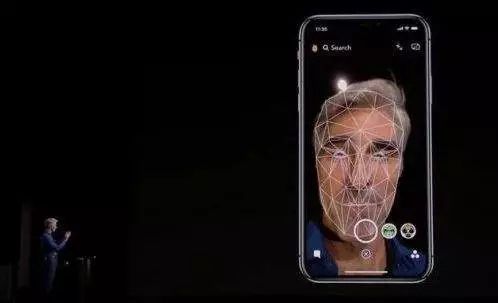
Even the fingerprint recognition of the screen that Apple has not used is difficult.
Fingerprint recognition technology is one of many biometric identification technologies. Available biometric technologies include fingerprints, faces, voice prints, irises, and the like. Fingerprint is one of the most widely used. There are three main types of fingerprint acquisition technologies for smart phones: capacitive, optical, and ultrasonic. Among them, capacitive type still has the highest market share in the field of smart phone applications.
Since our fingerprints are made up of uneven skin lines, the texture of each finger is completely different, so different fingerprint images can be obtained by the sensor. Since the surface roughness of the skin causes the distance between the different positions of the fingerprint to the sensor to be different, the measured capacitance is also different, and finally the fingerprint image is translated into an electrical signal that the chip can understand, so that accurate fingerprint measurement can be realized. However, the capacitive fingerprint sensor also has the disadvantage that it cannot recognize the fingerprint pressed on the screen through the screen of the mobile phone, mainly because the thickness of the screen module itself causes the sensor to collect insufficient useful signals. This makes the front capacitive fingerprinting solution useless on full-screen phones.
The full screen, literally explained, is that the front of the mobile phone is all screens, with a borderless design, the pursuit of close to 100% of the screen. However, due to the current technology, the industry claims that the full-screen mobile phone is only a high-screen mobile phone, and there is no mobile phone that can make 100% of the front screen of the mobile phone. Nowadays, the comprehensive screen mobile phone in the industry refers to a mobile phone with an ultra-narrow bezel design with a real screen ratio of more than 80%. If you want to make the full screen more "comprehensive" or even closer to the real "full screen", the screen fingerprint recognition must be overcome.
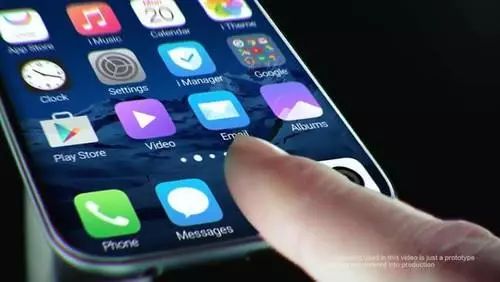
The screen fingerprint recognition technology, also called invisible fingerprint technology, is a new technology for completing the fingerprint recognition and unlocking process under the screen glass. It mainly uses ultrasonic, optical and other penetrating technologies to penetrate various materials to achieve the purpose of fingerprint recognition. .
The so-called under-screen fingerprint refers to the identification technology that completes the acquisition through the screen, without the direct contact of the finger with the fingerprint module. Under-screen fingerprint recognition ensures the integrity of the screen, and the finger can be directly attached to the screen to identify and unlock. At the same time, the fingerprint recognition under the screen can also greatly reduce the impact of finger dirt, grease and sweat on unlocking.
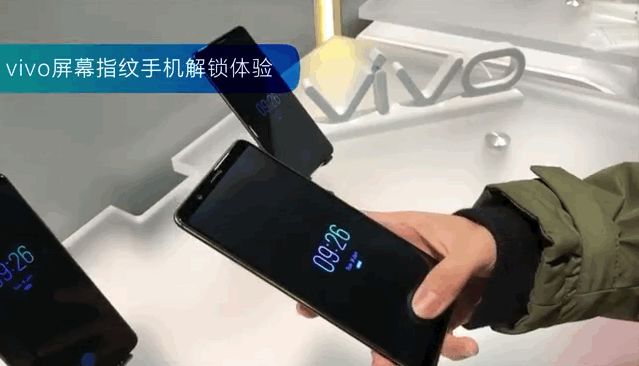
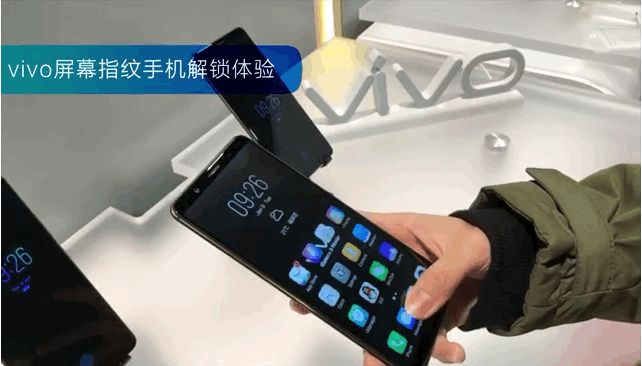
Currently, there are two types of under-screen fingerprint recognition schemes: one is realized by OLED, that is, optical fingerprint recognition; the other is ultrasonic fingerprint recognition.
Optical fingerprint recognition is to set up an optical sensor at the bottom of the screen to identify the user's fingerprint pattern by emitting near-infrared light. Ultrasonic fingerprint recognition is to set up an ultrasonic sensor at the bottom of the screen to complete fingerprint recognition through ultrasound.
Screen fingerprint identification technology solution
The fingerprint recognition under the screen is to place the fingerprint identification chip under the display module, which can realize the function of full screen and fingerprint recognition at the same time; the fingerprint recognition in the screen is a further development of the fingerprint recognition under the screen, and the fingerprint recognition chip is integrated into the OLED pixel. In the matrix, it is very difficult.
Due to the poor capacitive penetration capability, it is basically inoperable in this mode, so optical and ultrasonic are the best choice for fingerprint recognition and on-screen fingerprint recognition.
Optical fingerprint recognition is represented by the scheme of China Huiding Technology and South Korea's CrucialTec, and ultrasonic fingerprint recognition is represented by Qualcomm.
The optical solution relies on light reflection to detect fingerprint lines, so the optical screen/in-screen fingerprint recognition is more suitable for cooperation with the OLED screen, because the OLED panel has self-luminous characteristics, so that a certain interval can be left between the pixels to ensure light transmission. . Optical fingerprint recognition has a better performance in the maturity and precision of the industry chain, and it is expected to become a standard screen fingerprint recognition technology.
On the prototype of Samsung S7edge, Huiding Technology demonstrated the fingerprint solution in the optical screen, integrated fingerprint identification into the OLED display, and the user can touch the specified position of the screen to realize fingerprint recognition.
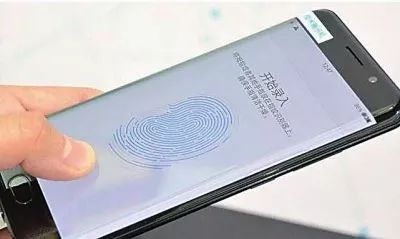
Samsung's partner, CrucialTec, has just received a US patent related to DFS (Display Fingerprint Solution) and announced that it will be commercially available next year. Unlike the sinking solution, DFS supports fingerprint unlocking anywhere on the screen, and even compatible with flexible OLED panels such as Samsung Full View curved screens, and DFS is not limited to optical solutions, but also supports traditional capacitive solutions.
Due to thickness issues, the fingerprint sensor is often located below the display with a low recognition rate and can only be applied to a portion of the screen. DFS can be unlocked in any area of ​​the screen, which is more advantageous in terms of recognition rate and thickness.
Ultrasonic fingerprint recognition was first introduced by Qualcomm, and then applied on Xiaomi 5S. Ultrasound was used to sense fingerprints. Qualcomm provided chips and Oufeiguang to provide a total solution.
The third generation of ultrasonic fingerprinting solutions released by Qualcomm. The technology can penetrate objects such as metal, OLED soft screen, glass, plastic, etc., and can penetrate up to 1200 micron of OLED screen, so it can be identified through the screen.

Although the recognition accuracy needs to be improved, its advantages of no need for opening, no direct contact, and no wet finger and micro-dirty can significantly enhance the user experience. After the industry chain is further matured and the accuracy is further improved, it is expected to become comprehensive. Screen fingerprint recognition is one of the most feasible solutions.
In addition, Samsung submitted a patent document on the front screen fingerprint recognition technology. The screen fingerprint recognition submitted this time is not only ordinary optical fingerprint recognition, but a fingerprint recognition system with a pressure sensitive sensor. This means that the Samsung mobile phone using this technology can activate the screen and realize fingerprint recognition by pressing the specified position in the off-screen state, without the need to light up the screen and then perform fingerprint recognition like the similar technology of the previous exposure.
How does the screen fingerprint recognition technology work?
The currently known under-screen fingerprint recognition scheme is mainly divided into two directions: one is realized by OLED, and the other is realized by using ultrasonic waves.
How optical fingerprinting works
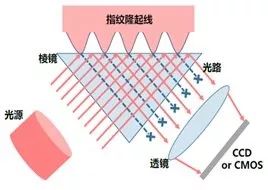
Let me talk about OLED first. Apple uses OLED screens from Samsung. Why does Apple choose OLED as the screen for its top-end products? The display effect is on the one hand, the rumored screen fingerprints in the room, it is also likely to be the reason for choosing OLED. But why can OLEDs achieve fingerprints under the screen, but TFT-LCD does not work?
Regarding mobile phone fingerprint recognition, there is a lot of information in the workshop, we will not say more, and the fingerprint recognition under the screen is the use of optical principles. Optical fingerprint recognition requires light emission and sensing devices. Since both LCD and OLED can be used as light sources, is it possible to place a CMOS sensor under the screen?
However, it is not so simple, TFT-LCD is difficult to perform fingerprint recognition on the screen. This is because the LCD is passively illuminated, and the LED backlight through the bottom emits light through the TFT. This layer of TFT itself is not so light-transmissive. If you don't make changes, put your finger directly, and the sensor under the screen is difficult to recognize the fingerprint. Therefore, if TFT-LCD is used for on-screen optical fingerprint recognition, technical improvements must be made to the TFT layer, such as adding some gaps or opening an area to allow the LED backlight to shine up. But even then, the LED backlight source will greatly interfere with the light reflected by the fingerprint. Therefore, TFT-LCD screen optical fingerprint recognition is difficult to achieve.
The OLED is active illumination. In theory, it can be precisely controlled to each sub-pixel point, so the OLED material screen is a more ideal emission light source. In addition, the OLED display module is thinner and can also reduce the fingerprint due to the placement of the screen. The problem that the overall body of the sensor is thickened.
At present, there are three development directions for the use of OLED screens in the industry chain: 1. A CMOS sensor is placed directly below the screen, and the gap between the sub-pixels of the OLED is used to allow the light to penetrate through the past to identify the fingerprint; 2. The sensor is reduced and the pixel of the OLED is inserted. Between the points; 3, the CMOS sensor is made transparent, directly mounted on the top of the AMOLED screen, and the optical fingerprint recognition is made into a layer of recognition.
In terms of fingerprint recognition under optical screens, many companies have already begun to try and have preliminary results. Huiding Technology has demonstrated the use of AMOLED screens to achieve offline fingerprint recognition. The demonstration models are Samsung Galaxy S7 Edge and vivo Xplay6. Huiding Technology has placed a CMOS sensor at the bottom of the screen, according to the patent registered by Meiding Technology in the US: Xuanji is in these three pictures.
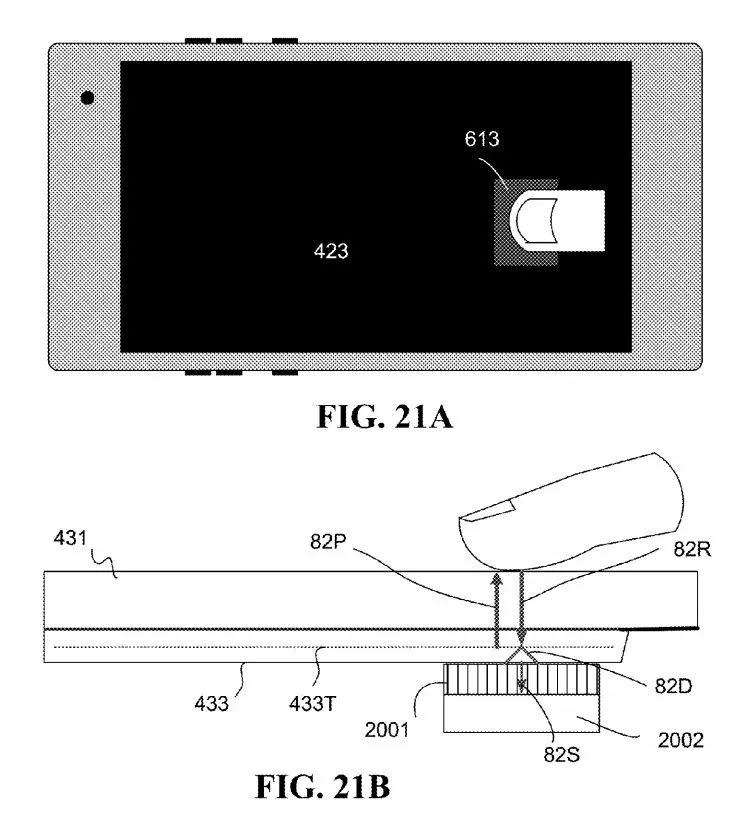
FIG. 21A and FIG. 21B illustrate where the fingerprint recognition sensor is placed from both the top and side views.
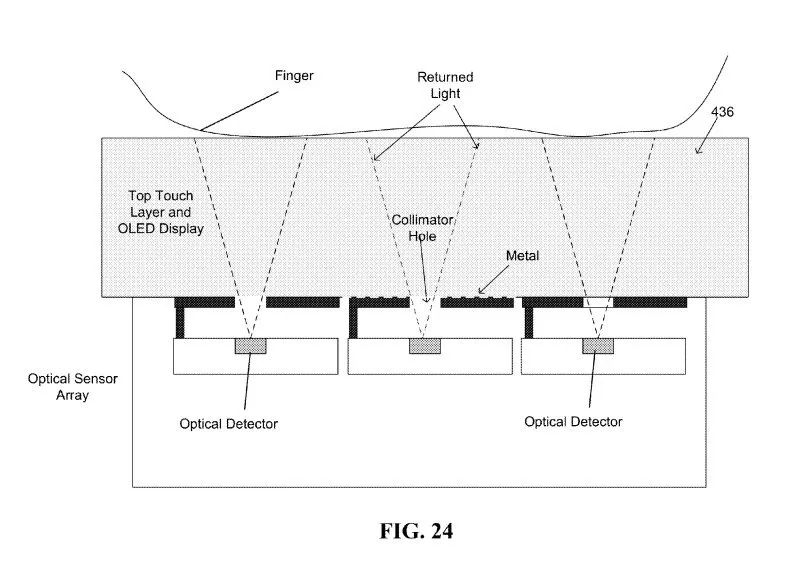
Figure.24 shows how the light penetrates the OLED screen from the microscopic point of view. The top part is the finger; the gray area on the top is the screen part of the phone. Through the small hole of the screen, the top of the screen is called "Collimator Hole", and the light optical sensor reflected by the finger is collected and processed.
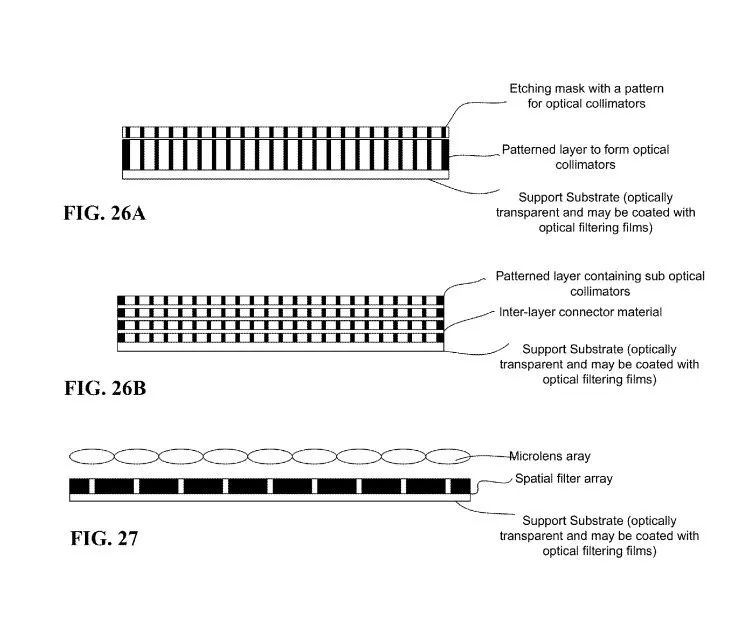
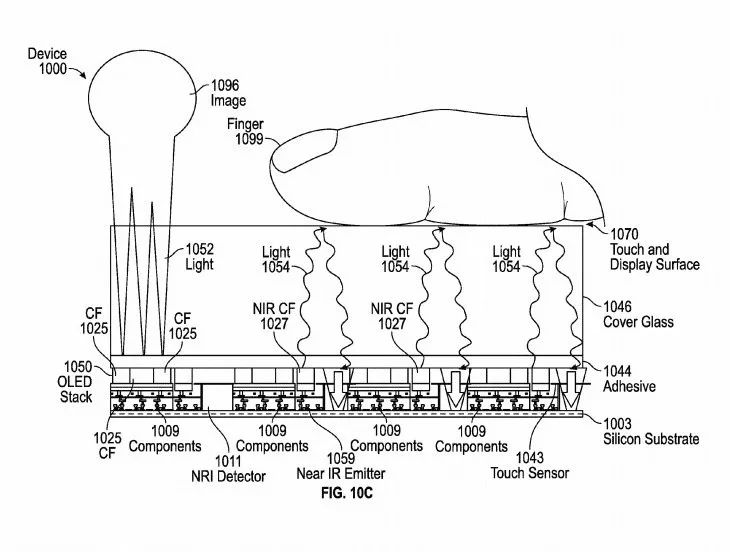
How to ensure that the light is collected from the fingerprint? This requires collimation of the light. As shown in Fig. 27, the special top micro lens array (MicroLens Array) and optical space filter array (Spatial Filter Array) are customized. The micro lens array needs to be processed by MEMS (Micro Electro Mechanical Systems) technology or chemically processed. These two arrays ensure that the light entering the sensor is basically reflected from the fingerprint, not the screen or the sun.
Another screen fingerprint recognition direction is the use of ultrasonic fingerprint recognition
Qualcomm called it Sense ID, and FPC, the leading fingerprinting company, has just released their plan. Ultrasound requires neither photosensitive elements nor capacitive sensing, so it is more suitable for off-screen fingerprint recognition. The full-screen fingerprinting used by the Vivo demo is based on Qualcomm's solution and Oufei's modules.
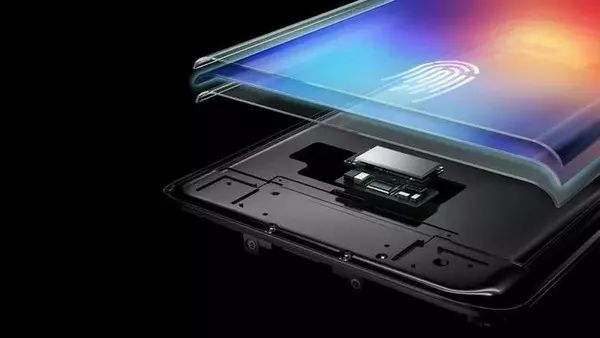
At present, there are not many ultrasonic fingerprint recognition mobile phones for large-scale applications, mainly LeTV 2 and Xiaomi 5s. LeMax2 puts the fingerprint on the back, while the millet 5s is on the front side. At that time, the ultrasonic wave can't penetrate the too thick glass, the thickest is about 0.4mm, and the thickness of the mobile phone cover glass is about 0.6mm~0.9mm. The effective thickness of 0.4 mm is not sufficient to penetrate the thickness of the glass + display (0.6 mm + 0.3 mm). Xiaomi had to discuss with Lansi Technology to dig a piece of glass on the front panel to ensure that the ultrasonic energy could penetrate, so the glass in the fingerprint recognition area was thinned. According to information published by Qualcomm's official website, the new generation of Sense ID can penetrate 1.2mm OLED screen or 0.65mm aluminum or 0.8mm glass. This penetration capability is also sufficient for use on current glass or OLED screens.
But why doesn't vivo start to be used on mobile phones such as the X20? This is because a time optimization algorithm is also needed. The new technology needs a debugging process from release to formal application. Fingerprint recognition is a biometric technology with relatively high security requirements. Therefore, it takes time to optimize the algorithm to improve security, recognition speed, recognition rate and so on.
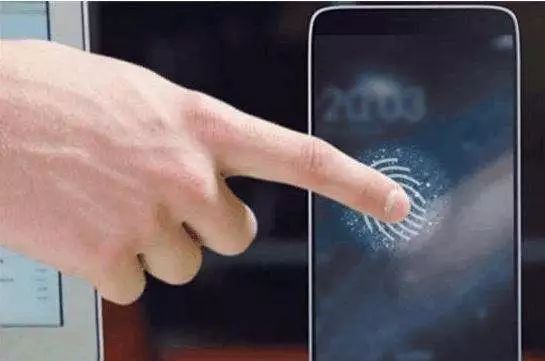
However, FPC's just-released program is even more frustrating. FPC said that whether your hand is dry or wet, whether your screen is AMOLED or LCD, even if your surface material is glass, we can recognize it. How thick can it penetrate? 20mm! 20mm! 20mm! The important thing is said three times. In contrast, Qualcomm's first generation Sense ID is 0.4mm, and the second generation can also penetrate 1.2mm. FPC can penetrate more than 16 times the thickness of Qualcomm.
The advantages of FPC's new technology include:
1. Support smart phone (any other device) clean front design, can be used for display, and also includes fingerprint recognition function to optimize the ratio of screen to mobile phone;
2. Full screen can be used for fingerprint recognition. There is no need to visually or physically highlight a specific area of ​​the smartphone as fingerprint recognition;
3. The technology captures fingerprints on different surface materials, such as in thick glass and metal. It works when the fingers are wet or the fingers are submerged under water. This technique works well for all different glass thicknesses, even the thickest glass on the market;
4. This unique technology works equally well on LCD panels and OLED panels.
Screen-related fingerprint recognition technology related manufacturers
At present, the mainstream fingerprint identification solution providers in the mobile phone industry mainly include American companies AuthenTec and Synaptics, Swedish manufacturer FingerprintCards (FPC) and China's Huiding Technology.
FPC
FPC is a Swedish biometric sensor technology company that develops, manufactures and markets fingerprinting technology. In 2013, FPC began to enter the smartphone market in a big way. Thanks to competitor AuthenTec, which only provided products and technology to Apple, FPC became the leader of the non-Apple mobile phone camp.
FPC's technological competitive advantages include unique image quality, low power consumption and a complete biometric system, but its sensor price is not low. However, with the impact of many domestic fingerprint chip manufacturers (especially Huiding), the price of FPC is also falling, and the market share is gradually being robbed.
In 2015, FPC almost monopolized the Android fingerprint chip market. In 2016, the overall market situation has seen that domestic manufacturers have regained many markets, but the fingerprint chip of Android mobile phone system is still the largest share of FPC occupation, reaching 40%, 2017 1-6 In the month, FPC became the biggest winner in the fingerprint chip, and its shipment volume reached 123KK.
AuthenTec
Founded in 1998, AuthenTec has been the world's largest supplier of inductive fingerprinting sensors, and its fingerprint recognition component has been embedded in Windows notebooks for many years. In 2011, AuthenTec developed a new fingerprint recognition technology based on capacitance and radio frequency identification, called “TruePrintâ€. The patented TruePrint technology can read the active layer under the skin surface (where the human fingerprint is actually located). Extremely accurate and reliable fingerprint imaging.
Prior to 2012, AuthenTec became the world's leading supplier of fingerprint sensors and chips and modules, identification software and encryption security solutions with annual sales of $70 million, more than 200 patents and 230 employees. More than 35 million sensors are used worldwide, including Alcatel-Lucent, Cisco, HP, Samsung, Lenovo, LG, Motorola, Nokia and more.
AuthenTec is the creator of TouchID on the Apple iPhone. In July 2012, Apple spent $356 million to acquire AuthenTec, and AuthenTec began to stop selling fingerprint chips to third parties. In 2013, Apple's iPhone5sTouchID chip was the product of AuthenTec, which was well received by the market and set off a fingerprint identification boom. Subsequently, many of Apple's new products are equipped with AuthenTec fingerprint identification chip.
Apple recently accepted auth.com, which stands for AuthenTec's abbreviation, to its own name. The industry believes that Apple will have new actions and contact AuthenTec's business content. It is likely that Apple will exert its power on the screen fingerprint recognition technology.
However, Apple's chief engineer DanRiccio said that Apple has already decided to completely discard fingerprints, and stressed that Apple has never tried to screen the back, back and side fingerprints on the iPhoneX. This makes people very difficult to understand, after all, the core advantage of AuthenTec lies in fingerprint recognition.
Huiding Technology
Huiding Technology was established in 2002 and landed on the A-share market on October 17, 2016. According to the 2016 financial report, the net profit of Huiding Technology reached 857 million, a year-on-year increase of 126.51%. As of September 2017, Huiding Technology has applied for and obtained a total of 1,500+ international and domestic patents.
The current customer base of Huiding's fingerprint identification products includes Huawei, OPPO, vivo, LeTV, ZTE, Xiaomi, Meizu, Lenovo, Gionee, TCL, Amazon, Dell, HP, ASUS, acer, TOSHIBA, Panasonic and many other domestic and overseas terminal manufacturers. .
Meizu flagship PRO6Plus also launched the live fingerprint identification chip of Huiding; Huawei's Mate10, P10/P10Plus, MatebookX, and glory series flagship models all use Huiding's fingerprint identification solution. Thanks to the adoption of many brand manufacturers, Huiding's fingerprint identification chip shipments have exploded this year.
At the MWC2017 conference, Huiding launched the on-screen fingerprint recognition technology. This technology refers to the complete integration of the fingerprint recognition function in the AMOLED display. The user can directly touch the designated area of ​​the mobile display to realize fingerprint recognition.
Synaptics
Synaptics was founded in 1986 and in 2002 Synaptics was listed on the NASDAQ Stock Exchange and began trading. In early 2015, Synaptics also introduced push-type (NaturalID) fingerprint recognition technology for high-end mobile devices. At present, Lenovo, ZTE, Gionee, Coolpad, etc. in China also use Synaptics' fingerprint recognition sensor.
On December 12, 2016, Synaptics announced that its third-generation NaturalID glass under-glass fingerprint sensor NaturalIDFS4500 has been sampling since September. The FS4500 can scan fingerprints through glass or ceramic buttons. After mass production, mass production is expected to be realized in the fourth quarter of this year.
On December 13, 2016, Synaptics announced the industry's first NaturalID family of biometric authentication solutions, the FS9100, for optical fingerprint sensors for smartphones and tablets. According to reports, the NaturalIDFS9100 series of optical fingerprint sensors can achieve high-resolution scanning through a 1mm full cover glass, and achieve a simple, button-free industrial design, providing mobile phone manufacturers with a screen fingerprint identification technology solution.
The latest news shows that a mobile phone manufacturer named UMIDIGI in Shenzhen recently released a full-screen smart phone called UMIDIGIZ2, which will adopt an iPhoneX-like design, but the biggest highlight is the fingerprint under the screen. According to reports, this product is expected to use Synaptics' FS9100 optical fingerprint sensor for on-screen fingerprint recognition.
Duntai
Established in the United States in 2005 and listed in Taiwan in 2013, Duntech is the world's leading provider of human-machine interface solutions, capacitive touch solutions, fingerprint identification solutions and a full range of TFTLCD display driver & control solutions providers.
On September 24, 2014, Duntai cooperated with Norwegian fingerprint identification factory IDEX (IDEX focused on fingerprint identification technology development, with more than 200 patents, including patent cross-licensing with AuthenTec) to jointly develop slider-type fingerprint sensing. Device, grab the fingerprint identification market.
At the end of 2014, Duntai officially released a complete fingerprint identification program. Then the smartphone based on the Duntai FT9200 fingerprint identification solution was officially launched in February 2015, but then Duntai's fingerprint business almost fell into a stagnation. Chip shipments are very small, because most of the original fingerprint identification technology team left, some people followed Mo Lianghua (Dong Taiyuan, deputy general) to set up Xinyi Technology, and another group set up the core to sail, this Both companies are positioned in the field of fingerprinting.
It is reported that due to the relatively mature optical industry chain, Duntai will focus on optical screen fingerprints.
Qualcomm
Qualcomm believes that everyone is very familiar with it, and I will not introduce it here.
At the 2015 MWC show, Qualcomm released the SenseID3D ultrasonic fingerprint recognition technology. The SenseID ultrasound scan penetrates the outer skin of the finger, capturing unique features such as fingerprint ridges and sweat pores, and identifying unique 3D features of the user's fingerprint.
In June of this year, Qualcomm officially announced the launch of the technology at the MWC Shanghai Conference, calling it the next generation ultrasonic fingerprint solution fingerprint sensor.
The technology's fingerprint sensor for display screens can scan, record and match fingerprints through OLED display screens up to 1200 microns. Fingerprint sensors for glass and metal can pass through glass panels as thick as 800 microns and thick to 650 micron aluminum. The material housing scan solution enhances the previous generation's 400 micron glass or metal penetration capability.
Samsung
Samsung is also very familiar with everyone, and there is no rumor here.
Recently, Samsung just submitted a patent for fingerprint recognition on the screen.
From the public information of Huiding and FPC, the current fingerprint recognition of screens has made great progress in technology. It is believed that mass production will be realized soon, and it is expected that the spring of the market will be ushered in.
Outdoor Mobile LED Kiosk Poster
The Best Advertising choice and the best money earning machine--Outdoor LED screen kiosk
Outdoor Led Kiosk Poster also called led AD Kiosk player is one of new applications for led displays. Developed from led screens, it is more suitable and friendly to operate. Don't need to install as it is floor standing. and could be put anywhere it needed indoor or outdoor environment.
Optional Pixel Pitch 4mm,5mm,6mm.optional sizes 60`'.IP65/54, weather proof; Ultra Outdoor HD led display Kiosk poster, crystal clear and vivid images; High brightness and auto adjustment according to environment; Intelligent group management, easy and convenient. Thanks to the Cluster controll system and GPS technology, no matter how many posters you have where they are, you could controll them easily and change content quickly.
They are one of none stop money earning machines!
Intelligent monitoring and GPS
High brightness for outdoor and energy saving
Outdoor Mobile Led Poster,Mobile Led Poster,Outdoor Display Of Mobile Led Poster,Led Screen Of Window Signage
Shenzhen Priva Tech Co., Ltd. , https://www.privaled.com
